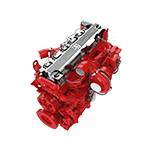Nov . 30, 2024 13:26 Back to list
removing brake drum
Removing Brake Drum A Step-by-Step Guide
Removing a brake drum is an essential skill for anyone interested in vehicle maintenance, particularly for those who drive older vehicles equipped with drum brakes. Understanding how to perform this task safely and efficiently can save both time and money. In this article, we will provide a comprehensive guide on how to remove a brake drum, ensuring you have all the necessary knowledge to tackle this job with confidence.
Tools and Preparation
Before starting the removal process, gather the tools you will need
1. Jack and jack stands 2. Lug wrench 3. Screwdriver (flat-head and Phillips) 4. Brake drum removal tool (optional) 5. Clean rags 6. Safety glasses and gloves
Once you have your tools ready, ensure you are working in a safe environment. Park your vehicle on a level surface, engage the parking brake, and turn off the ignition to prevent any accidents during the process.
Step 1 Lift the Vehicle
Begin by loosening the lug nuts on the wheel where you plan to remove the brake drum. You may need to apply some force to break the torque, so ensure that the lug nuts are loose but not completely removed. Next, use your jack to lift the vehicle off the ground, then secure it with jack stands to provide stability while you work. Always remember to never work under a vehicle supported only by a jack.
Step 2 Remove the Wheel
With the vehicle securely lifted, proceed to take off the lug nuts completely and remove the wheel. Place the wheel out of the way, ensuring that it does not pose a hazard as you work on the brake drum.
removing brake drum

Step 3 Inspect the Brake Components
Before removing the brake drum, take a moment to inspect the components. Look for any signs of wear or damage, such as leaking brake fluid or worn brake shoes. If anything appears to be in poor condition, this might be a good opportunity to replace those components.
Step 4 Remove the Brake Drum
To remove the brake drum, you will first need to locate the retaining screws, if present. These screws typically secure the drum to the hub. Use a screwdriver to remove these screws. If the drum is stuck due to rust or buildup, you can gently tap it with a rubber mallet to break it free. If necessary, a brake drum removal tool can also be used to assist in the process.
Once the drum is free, carefully slide it off the wheel hub, keeping an eye on the brake shoes and springs. Take care not to damage any components during this process.
Step 5 Clean and Inspect the Brake Drum
After removing the brake drum, take the opportunity to clean it thoroughly. Use a clean rag to wipe away any dust or debris. Inspect the inner surface of the drum for scoring or significant wear. If the surface appears damaged, it might require resurfacing or outright replacement.
Conclusion
Removing a brake drum may seem daunting at first, but with the right tools and a careful approach, it can be accomplished with ease. Regular maintenance of your brake system is vital for your vehicle’s safety and performance. Always ensure that you follow safety precautions and consult your vehicle’s manual for specific instructions related to your make and model. By mastering this skill, you not only save money on repair costs but also gain a deeper understanding of your vehicle, enhancing your overall driving experience.
-
Explore Japan: Ultimate Travel Guide & Authentic Experiences
NewsAug.19,2025
-
Your Brake Drum Man: Premium & Reliable Brake Drums for Sale
NewsAug.18,2025
-
ROR Web Development: Build Fast, Scalable, Secure Apps
NewsAug.17,2025
-
Scania Brake Drums: OEM Quality for Optimal Safety & Durability
NewsAug.16,2025
-
R.V.I: Advanced Remote Visual Inspection for Precision
NewsAug.15,2025
-
Discover HYUNDA: Innovative Vehicles, Equipment & Solutions
NewsAug.14,2025
